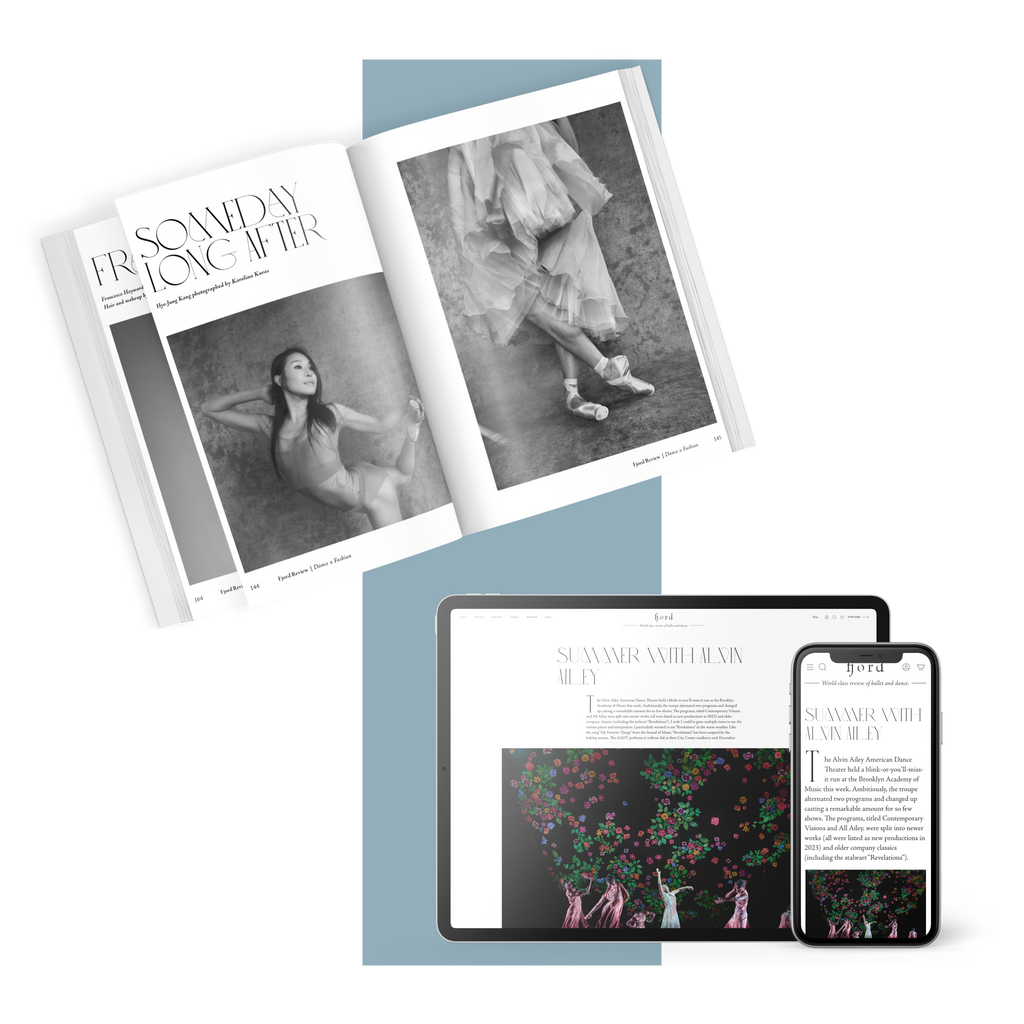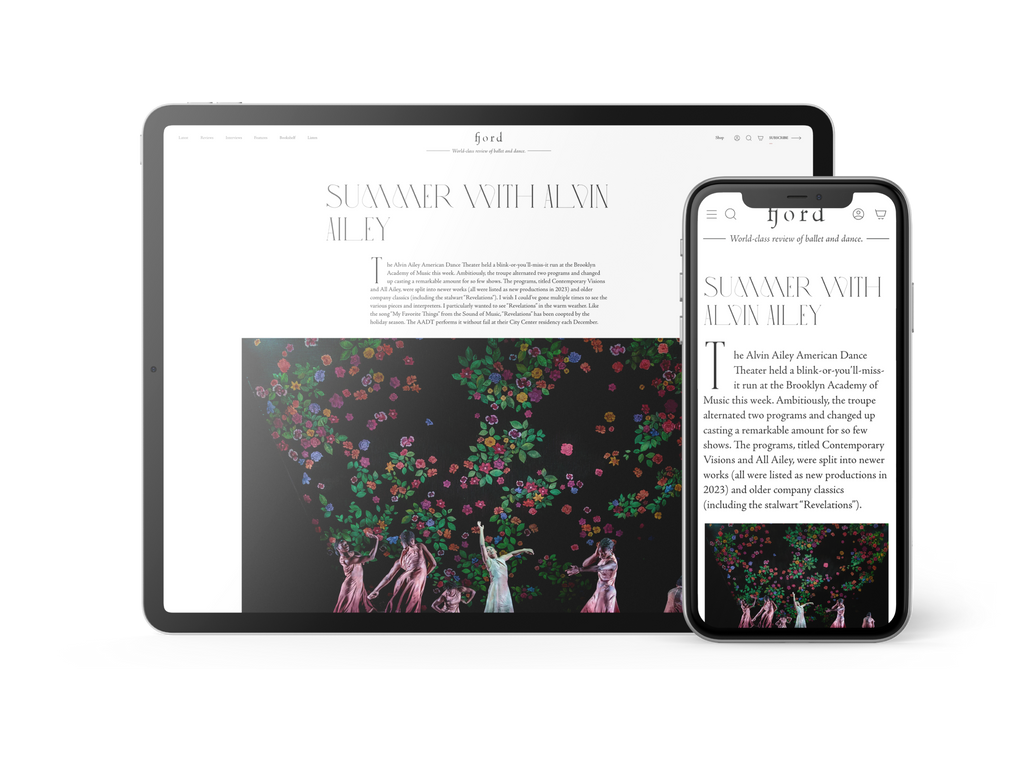Serata Forsythe
This program of three works by William Forsythe set to the music of James Blake has special meaning for La Scala Ballet.
Continue Reading
World-class review of ballet and dance.
As “’lectric Eye” opens, a group of 14 bursts onstage, stepping in formation as runway fashion model swagger meets drill team precision. They criss cross the stage, arms swinging, hips gyrating, assorted gold and coppery mylar apparel flashing. It’s sexy, glitzy and mind-boggling in its intricate unison. As a group they step, turn, lunge, plié, kick, dip, relevé—constantly changing direction to a droning disco beat punctuated by the sound of drumsticks. Sound and movement are equal partners in choreographer Joanna Kotze’s work, and for “’lectric Eye,” musical collaborator, Ryan Seaton, emerges from the sound booth to perform a fully integrated role onstage. He plays his original electronic music, he sings, and while the drill team does its thing, he jumps rope. For a very long time.
Performance
Place
Words

Joanna Kotze's “'Lectric Eye.” Photograph by Maria Baranova


“Uncommonly intelligent, substantial coverage.”
Your weekly source for world-class dance reviews, interviews, articles, and more.
Already a paid subscriber? Login
This program of three works by William Forsythe set to the music of James Blake has special meaning for La Scala Ballet.
Continue ReadingUshering in the ninth season of Dance at the Odyssey, which takes place January 8–February 16 at the Odyssey Theatre Ensemble and features a number of cutting-edge choreographers and world premieres, curator, producer and festival co-founder Barbara Müller-Wittmann adores her job.
Continue ReadingAround this time of year, we can all use a little cheer. The early darkness, the cold, the state of the world alone can send one into a spiral.
Continue ReadingWill Tuckett’s new production of the “The Nutcracker” for the National Ballet of Japan serves up a holiday feast for the senses. Sweetly invigorating, it’s also a warm toddy for the soul. From start to finish, Tuckett’s “The Nutcracker” is truly a dream.
Continue Reading
comments